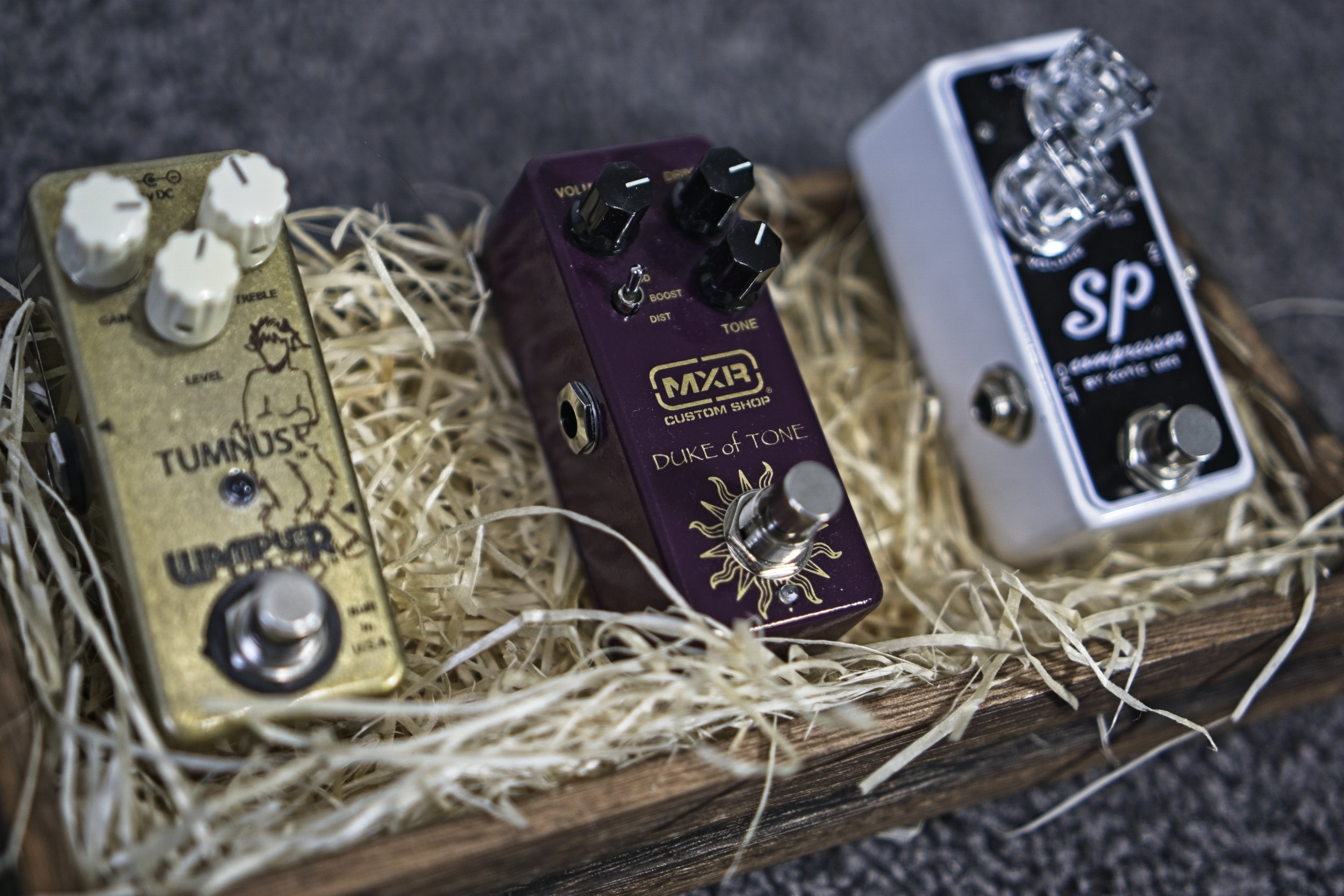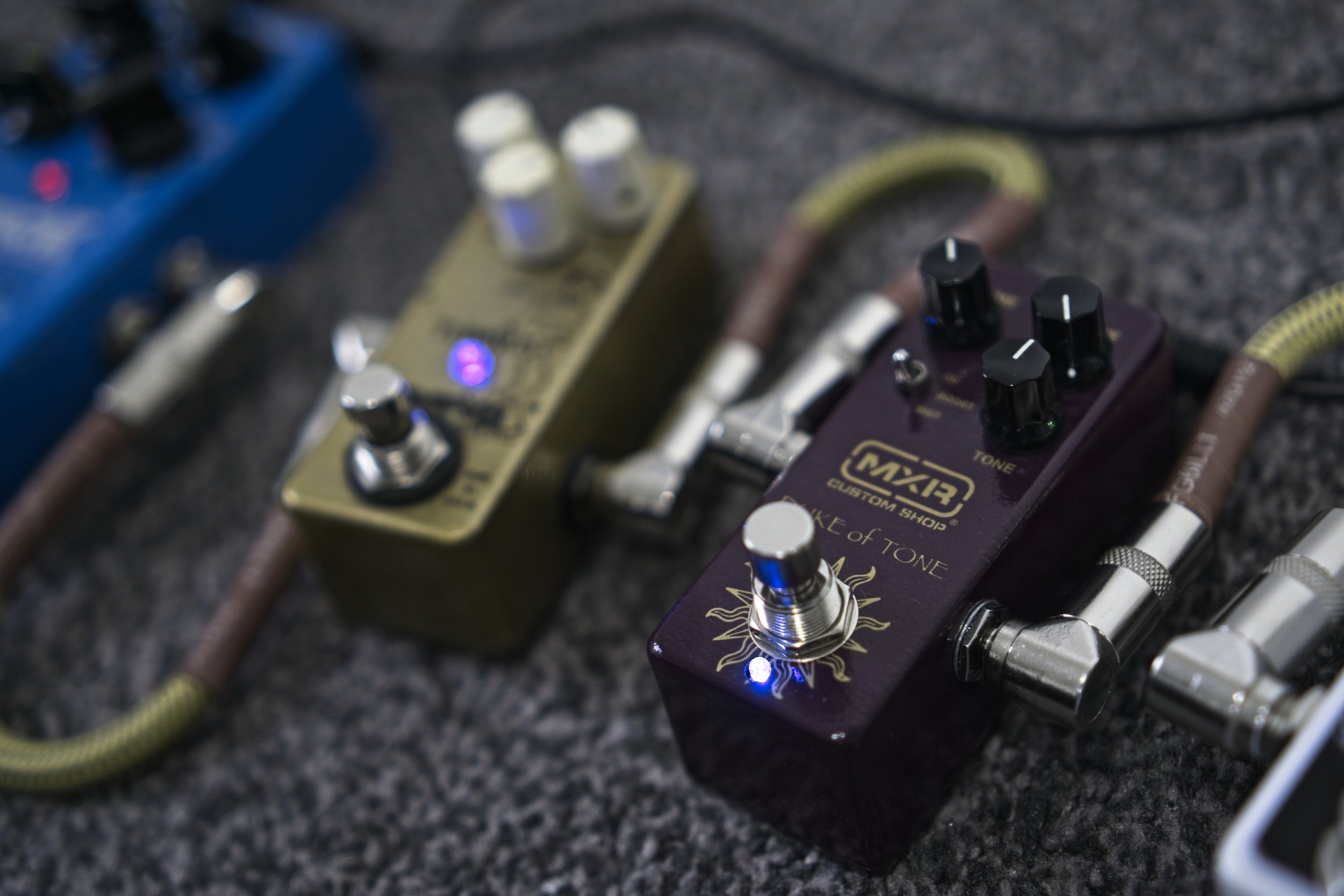MXR Duke of Tone
Not quite the king.
£179 at guitarguitar.co.uk | £189 at thomann.com
The Duke of Tone guitar pedal by MXR is the result of a partnership between MXR and Analogman, in response to the increasing popularity of Analogman's King of Tone pedal. While it may be tempting to compare the Duke of Tone directly to Analogman’s King of Tone, it's important to note that the King of Tone is actually two pedals in one, allowing for gain stacking that greatly contributes to its unique sound. The Duke of Tone is, in fact, an exact copy of the Prince of Tone by Analogman. With that said, the Duke of Tone does offer its own set of features and advantages.
One of the most notable features of the Duke of Tone is its toggle switch, which allows the user to switch between Boost, Overdrive, and Distortion modes. This is a convenient alternative to the internal dip switches found on the King of Tone, making it easier to quickly adjust the pedal's settings on the fly. However, the King of Tone and its little brother/son, the Prince of Tone, also feature internal treble pots. This provides even more tonal versatility and the ability to fine-tune the tone to your liking, which the Duke of Tone does not offer.
In terms of sound, the Duke of Tone delivers on its promise of transparent overdrive that retains the unique characteristics of your guitar and amplifier. Side by side, it sounds identical to the Prince of Tone. All three knobs have the same range as the Prince and the volume of the pedal is the same too, maybe even a touch louder. The Boost mode offers the lowest gain of the three settings, but compensates with added volume, making it a useful tool for pushing your amp from edge-of-breakup into overdrive territory. The Distortion setting is the most compressed of the three, but still manages to sound natural thanks to its symmetrical clipping. While the Distortion mode can stand on its own, it won't reach the extreme gain levels of pedals like the Fulltone OCD or the Suhr Riot. In my experience, the Overdrive mode is the standout setting on the Duke of Tone, offering a rich and responsive sound that stacks well with other overdrive pedals. Pairing it with another Duke of Tone or a Wampler Tumnus can produce some truly impressive results.
In terms of build quality, the Duke of Tone is top-notch, with rugged metal housing and high-quality components that give it a premium feel. The smaller form factor might be a selling point to some, although, due to the side-mounted jacks, it will take up about as much space as a Prince of Tone on your board. At £180 it is actually quite expensive. For comparison, MXRs collaboration with Paul Cochrane on the Timmy Pedal costs just £140, and the Sugar Drive (MXRs take on the Klon) is just £99. If you want to replicate the King of Tone sound, you will need two of them and still will not have all the features.
The King of Tone circuit is based on the discontinued Marshall Bluesbreaker. Many companies have made versions of it. The JHS Morning Glory is very popular and can be combined with a Tube Screamer circuit in the JHS Double Barrel. Wampler make the Pantheon available as a single or double pedal for a lot less than the Duke of Tone.
Bottom Line
Does the Duke of Tone live up to the hype? In some ways, yes – it's a fantastic pedal in its own right, with an excellent build quality and a range of useful features. However, it's worth remembering that it can't quite replicate the unique sound of the King of Tone, which requires two pedals and additional features to achieve. As an alternative to the Prince of Tone, however, the Duke of Tone is a worthy contender, offering the same sound at a more accessible price point. Overall, the Duke of Tone is a solid addition to any pedalboard and is sure to satisfy players looking for a versatile overdrive pedal.




